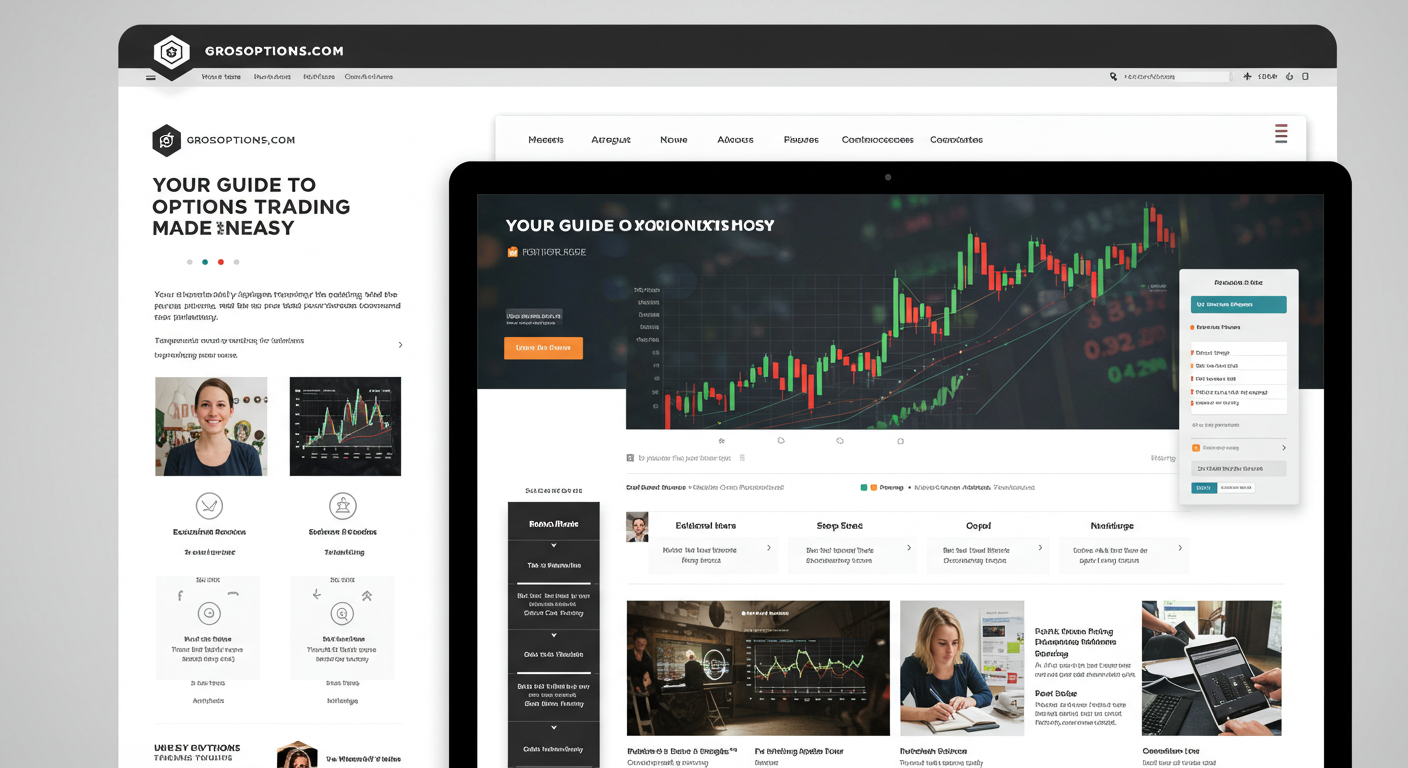The digital world is evolving at lightning speed, transforming how businesses operate, connect, and thrive. For companies and professionals, staying ahead in a world dominated by technology is no longer optional—it’s essential. Digital success today isn’t just about having a presence online—it’s about leveraging the right tools, strategies, justin42501 and platforms to achieve measurable outcomes and stay competitive.
In this ultimate guide, we’ll break down actionable steps, strategies, and insights on how to excel in today’s digital landscape. Whether you’re a business looking to grow, a professional seeking a stronger online presence, or someone interested in learning the digital ropes, this guide is packed with everything you need to know.
Why Digital Success Matters
Digital success is the gateway to more opportunities, better engagement, and efficient growth. Digital-first strategies not only increase visibility but also help brands build trust, drive conversions, and create long-term customer relationships.
Still not convinced? Consider these insights:
- By 2023, nearly 65% of global ad spending is projected to go to digital platforms.
- Companies with a strong online presence are, on average, 28% more profitable than those that ignore digital platforms.
- About 86% of consumers look up a business online before making a purchase decision.
If you want long-term sustainable growth, mastering digital success is critical.
Key Components for Digital Success
Achieving success online means taking a multi-faceted approach. Each aspect helps build a cohesive digital presence that leaves an impact.
1. Build a Strong Online Presence
Without a strong foundation, all your efforts can fall flat. Here’s where you should focus to build a lasting digital presence:
Optimize Your Website
Your website is your digital storefront. Make it clean, navigable, and responsive to earn trust and retain visitors. Key points to focus on include:
- Make your site mobile-friendly (52% of web traffic comes from mobile devices).
- Use SEO best practices to increase organic traffic.
- Ensure quick loading times—studies show a page load delay of even 1 second can decrease conversions by 7%.
Create Valuable Content
Your content is your voice. It needs to engage, inform, and build authority. Blogging, videos, infographics, or podcasts—choose formats that resonate with your audience.
- Answer common pain points or questions your audience has.
- Opt for storytelling to make your content memorable.
2. Master Social Media
Social media is one of the most powerful tools for engaging customers. But success requires strategy. Instead of spreading yourself too thin across all platforms, focus on those where your audience spends the most time.
Strategies to succeed on social platforms:
- Post consistently; use tools like Hootsuite or Buffer to schedule content in advance.
- Use analytics to measure your engagement and optimize future posts.
- Engage in two-way communication by replying to comments and messages promptly.
Statistics show that brands that actively engage with their audience on social media see revenue growth that’s 20–40% higher than those that don’t.
3. Leverage Digital Marketing
Digital marketing ties everything together. Blending data-driven strategies with audience-focused messaging creates campaigns that perform well.
SEO Optimization
Search Engine Optimization is the backbone of digital success. Invest time in keyword research, tightening up on-page optimization, and acquiring quality backlinks. Tools like SEMrush or Ahrefs can guide your strategy.
Pay-Per-Click Advertising (PPC)
PPC campaigns on platforms like Google Ads and Facebook Ads can give you instant visibility.
- Use clear CTAs and compelling visuals to maximize your ROI.
- Monitor metrics like impressions, click-through rates, and cost per acquisition to tweak campaigns as needed.
Email Marketing
Despite the rise of newer channels, email marketing remains one of the most effective forms of marketing, delivering an average ROI of $36 for every $1 spent. Segment your email list, personalize communication, and regularly share value-packed newsletters.
4. Data and Analytics
Never underestimate the power of data. Measuring the effectiveness of your strategies allows you to optimize and improve constantly.
- Use tools like Google Analytics to track website metrics such as bounce rates, session duration, and traffic sources.
- Monitor KPIs for your email campaigns, social engagement, and more through platforms like Mailchimp or HubSpot.
- Leverage user behavior reports to make data-driven decisions about what’s working and what isn’t.
5. Build Customer Relationships
Your digital success hinges on how well you connect with your audience. Businesses that prioritize customer experience and relationships outperform their competitors significantly.
Engage in Conversations
Engage authentically with your audience using platforms like social media, blogs, and email. Customer feedback is a goldmine for understanding improvement areas.
Offer Value Beyond the Sale
Loyalty programs, exclusive discounts, or educational resources can build brand affinity and turn one-time customers into lifelong advocates.
Overcoming Common Challenges
While the road to digital success is rewarding, there are always challenges along the way. Here’s how to tackle some of the common hurdles:
“I’m Overwhelmed by Too Many Options!”
Start small. Select 2–3 strategies that resonate most with your goals. For example, focus on building your audience with Instagram content and pairing it with monthly blog posts.
Tight Budget?
Digital tools often have free tiers or trials—use those to get started. For example, Canva offers free templates for content creation, while HubSpot provides free CRM tools.
Lack of Expertise
Platforms like Coursera or LinkedIn Learning make it easy to sharpen your digital skills. Invest in your own learning!
Take Small, Intentional Steps
Digital success is less about overnight transformations and more about building sustainable habits. Focus on small, consistent changes to your website, content, and marketing strategies. Measure your results, adapt where necessary, and commit to long-term growth.
Actionable Next Steps You Can Start Today:
- Audit your website for speed, mobile-friendliness, and functionality.
- Schedule a week’s worth of social media posts on one platform.
- Create a free content offer (e.g., a PDF guide or checklist) to grow your email list.
- Sign up for free analytics or SEO tools to identify performance gaps.
Success may not come immediately, but remember this—every TikTok post, newsletter, or ad gets you one step closer.
Why Digital Success Matters
The Shift to Digital
The global economy has rapidly moved online. Today, over 5 billion people use the internet (Statista, 2023), making digital platforms the primary playground for businesses and professionals. Your audience, customers, or collaborators have shifted online, and failing to meet them there could mean missing critical opportunities.
The Competitive Edge
Being digitally savvy isn’t just a bonus anymore; it’s a necessity. Companies with optimized digital strategies are outperforming those without, and professionals who have mastered digital tools are becoming more indispensable across industries.
What Does Digital Success Look Like?
Digital success is about more than just having a website or posting occasionally on social media. It involves building an interconnected system of online tools and strategies that work together efficiently. Here’s what the foundation looks like:
- A Robust Online Presence
- Follower Growth & Engagement Across Platforms
- Streamlined Processes Using Digital Tools
- Data-Driven Decision Making
- Meaningful ROI from Your Digital Strategies
Now, let’s deep-dive into the core areas you need to master.
Crafting Your Digital Identity
Build a Visually Appealing Website
Your website acts as the digital front door to your brand or business. Here’s how to make a lasting impression:
- Clean Design: Stick to easy navigation, high-quality visuals, and responsive design. Tools like WordPress or Wix make this process painless.
- SEO Optimization: Ensure your site ranks on Google by focusing on relevant keywords and optimizing meta tags.
- Fast Loading Time: Did you know 53% of users abandon websites that take longer than 3 seconds to load? (Google, 2021). Tools like Google PageSpeed Insights can help.
Leverage Social Media Strategically
Pick platforms that align with your goals. Here’s a quick guide:
- Instagram/TikTok for visual-based brands or creators.
- LinkedIn for B2B professionals or companies building thought leadership.
- Twitter/X for fast-paced industries needing real-time updates.
- Be consistent, maintain authenticity, and always engage with your followers personally. Creative content like Reels or compelling Twitter threads can massively enhance visibility.
Build a Personal Brand
Your reputation online matters. Start by crafting an engaging bio on LinkedIn. Show your expertise through blog posts, guest features on websites, or even a podcast appearance. Being seen as an authority boosts credibility and generates opportunities.
Mastering Digital Marketing
Invest in Quality Content
Content is king.
- Start a blog to share industry insights or valuable information. This boosts SEO and establishes authority.
- Use storytelling. Share relatable and authentic brand experiences to connect with your audience emotionally.
- Leverage video content. Platforms like YouTube or Instagram Reels see the highest engagement rates for video-based marketing.
Implement Paid Advertising Wisely
Pay-per-click (PPC) advertising, like Google Ads or boosted posts on social media, lets you target specific audiences for quick results. Be sure to analyze each campaign to optimize your spending.
Build an Email List
Email marketing proves time and time again to have one of the best ROIs (return on investment) in digital marketing. Collect quality leads via your website, and send regular value-based communications to build trust. Tools like Mailchimp or ConvertKit can streamline this for you.
Leveraging Advanced Digital Tools
Use Analytics For Growth
Data is your compass. Tools like Google Analytics, SEMrush, and HubSpot offer real-time insights into what’s working (and what isn’t).
Example: Track website visitors and measure which blog content brings the most traffic. With this knowledge, you can replicate successes across future campaigns.
Automate Repetitive Tasks
Free up time to focus on big-picture goals by automating smaller tasks:
- Use Zapier to link apps and create workflows.
- Automate social media posting and email marketing.
- Use AI tools like Jasper or ChatGPT for generating ideas or content drafts.
Collaborate Remotely
Work seamlessly with tools like Trello, Slack, or Notion. Whether you run a team or work solo, having a dedicated project management toolkit keeps you—and your collaborators—on track with deliverables.
Community Building for Digital Longevity
Engage Authentically
Don’t just aim to sell—aim to connect. Reply to comments, ask questions in your posts, host live Q&As, or collaborate with influencers or industry peers.
Offer Exclusive Benefits
Reward your online community with perks like early access to products or gated content, such as webinars or eBooks. This reinforces loyalty and trust.
Encourage User-Generated Content
When customers and fans post about you on their platforms, it naturally grows your reach. Offer incentives for reviews, testimonials, or creative posts.
Staying Ahead of the Curve
Stay Adaptive
The digital ecosystem evolves quickly. Trends and algorithms that work today may be irrelevant tomorrow. Continuous learning, experimenting, and adapting will ensure that your digital success endures over the long run.
Learn from Data
Set clear goals, and regularly analyze progress using metrics like engagement rates, click-through-rates (CTR), site visits, or online sales conversions. Fine-tune your strategies by focusing on what yields the best results.
Take Charge of Your Digital Future
Becoming digitally successful doesn’t happen overnight, but you’re already ahead by educating yourself and taking action. Build your foundation thoughtfully, leverage data and technology, and never stop evolving. Whether you’re an individual or business, the digital realm has space for you to grow.
If you’re ready to unlock your true potential, start your digital transformation today by applying the tips above — the results may surprise you!
Final Thought
The digital world is a realm of endless possibilities, offering the tools and platforms to turn ideas into reality. Success lies in being proactive, staying informed, and always striving for improvement. Keep exploring, stay curious, and remember that every small step forward can lead to significant breakthroughs. The future is digital, and it’s yours to shape.
Conclusion
The journey to digital success is a continuous process of learning, adapting, and innovating. By taking deliberate steps to stay informed and leveraging the resources available, you can carve out your own path in the dynamic digital landscape. Always remember that progress, no matter how small, is still progress. With determination and a willingness to grow, the digital future is within your reach. Take the leap, stay committed, and watch your ambitions transform into achievements.
FAQs
1. What is digital transformation?
Digital transformation refers to integrating digital technologies into various aspects of a business, fundamentally changing how it operates and delivers value to customers. It involves adopting innovations like cloud computing, data analytics, and automation to enhance efficiency and competitiveness.
2. Why is staying informed in the digital space important?
The digital world evolves at a rapid pace, with new technologies and trends emerging constantly. Staying informed ensures that you can adapt to changes, leverage opportunities, and remain competitive in your industry.
3. How can I begin my digital transformation?
Start by identifying areas of your business that can benefit from digital solutions. Research tools and platforms that align with your goals, and develop a clear strategy for implementation. Begin with small, manageable steps, and measure progress along the way.
4. What are the key challenges of going digital?
Some common challenges include resistance to change, lack of technical expertise, budget constraints, and cybersecurity risks. Addressing these issues through proper planning, training, and support can help ensure a successful transition.
5. Can small businesses succeed in the digital space?
Absolutely! Small businesses often have the advantage of agility and flexibility, allowing them to adopt digital tools quickly. By leveraging the right resources and strategies, they can compete effectively and reach new audiences in the digital market.






